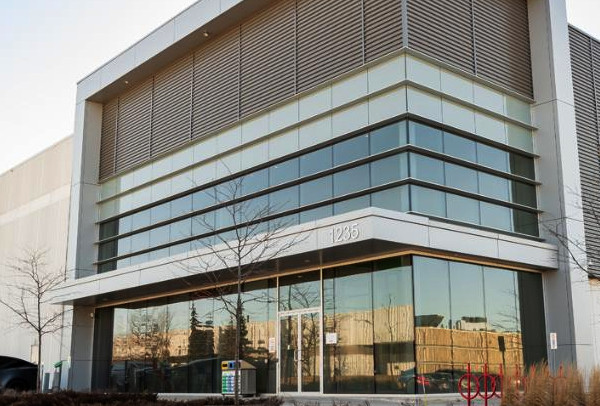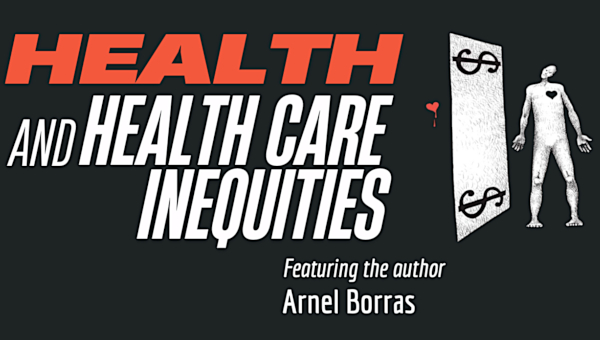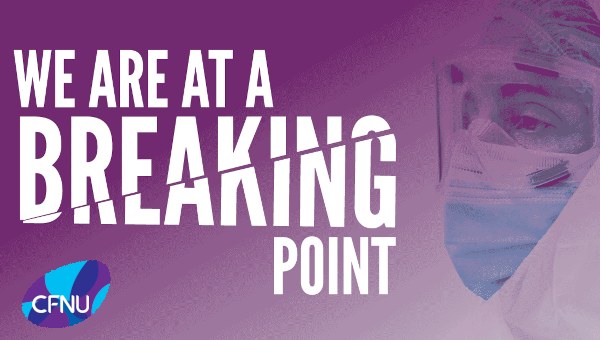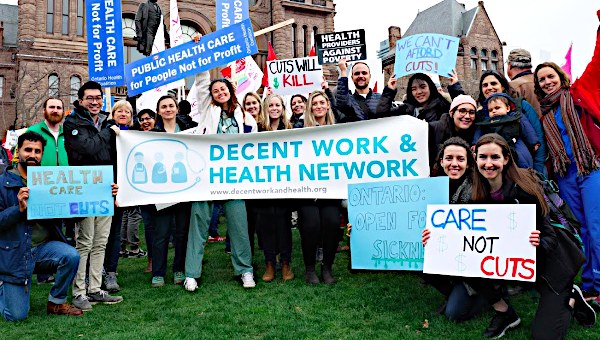Shocking but Not Surprising: COVID and Class
A recent Toronto Star article, by Sara Mojtehedzadeh and Jennifer Yang, “More than 180 workers at this Toronto bakery got COVID-19,” and reproduced below, reveals a large COVID outbreak at FGF Brands, a major industrial bakery in Toronto, where 184 workers tested positive and one died. That outbreak began in mid-April, but we are only hearing about it now. On reading the article I was simultaneously shocked but not surprised. How can that be?
It is shocking when we read that the essential workers, who continued to report to their jobs through the COVID-19 pandemic, in this case literally to make our daily bread, are not adequately protected against the risk of workplace spread of infection. Whether through insufficient engineering controls, cleaning, physical distancing or provision of personal protective equipment, these workers were placed at a highly elevated risk of contracting this highly infectious disease. This is indeed shocking.
It is also shocking when we hear that the workers who are exposed to these conditions are also largely recruited from poor immigrant communities that experience multiple social disadvantages and labour market discrimination, leaving them at the bottom of the labour market where a “good” job is one that pays slightly more than the minimum wage. But even these jobs are often not available and so many people work through temporary agencies, often paid less than the low-wage workers who they work alongside of and, as reported here, are often deprived of even minimum benefits such as two days of paid sick leave.
Who is Protecting Workers?
And it is also shocking when we learn that despite this outbreak, neither occupational health and safety inspectors nor public health officials were called to the workplace to inspect conditions and to issue orders requiring the employer take further precautions to protect the health and safety of these workers. This was the case even though it seems that public health officials were aware of the outbreak.
And finally, it is shocking that there is no system is in place to alert the public to the fact that workplace outbreak of COVID is occurring in the midst of a pandemic when community spread is a major concern. How can we put workplace health and community health into separate silos, as if one has no connection to the other?
While all of this is shocking, it is also not surprising because, at some level, we know this happens and, even worse, we expect it. We are too deep into the pandemic to accept the blandishments often heard at its outset that “we are all in this together.” We know that COVID-19 is disproportionately infecting and killing racialized and poor communities, in part because people from these communities are over-represented in industries and occupations where workers are required to attend their employers’ premises where they are at greater risk of becoming infected than those in more privileged positions who can work from home. We have heard about COVID outbreaks among workers employed at long-term care facilities, meatpacking plants and in agriculture.

We also knew that, even before COVID, hazardous working conditions are not evenly distributed in our society; that those at the bottom of the labour market are more likely to be experience hazardous working conditions than those at the top. We also know that the so-called hazard pay that economists and employers sometime say justifies this risk exposure by making it ‘voluntary’ is a sham when workers in hazardous jobs are being paid at or close to the minimum wage. The sham is made all the more obvious by the small and temporary wage increases or ‘thank-you’ bonuses offered by some employers to some essential service workers.
We also know that regulatory protections for the most vulnerable are also most likely to be inadequate to respond to the conditions they experience. We know that enforcement agencies lack the resources to maintain adequate inspection programs and that they are often complaint-driven rather than proactive, an approach that fails the most vulnerable workers who are least likely to complain. We also know that when called to COVID-related work refusals health and safety inspectors have consistently failed to order employers to take additional precautions.
And we know that private sector employers, despite their protestations that they are doing everything they can to create outstanding workplaces, are profit-driven enterprises that adopt strategies to extract more work for less pay. FGF, like many others, hires part of its workforce through temporary agencies to reduce its costs and keep its permanent workers under threat of even lower-wage competitors. It not only opposes unions, but resorts to crude, unfair labour practices, like firing the brave workers who stick their necks out by becoming lead in house organizers, knowing that even if they are caught, the labour board is unlikely to order an effective remedy, so that they can remain union free.
End the Cycle
We know all this, and more, so we are not surprised when we read yet another account like the one below. But we are still shocked. And that is a good thing. We can only be shocked as long as we have not built up a protective shield that inures us to the suffering and injustice we know are endemic in our society, suffering and injustice that are disproportionately experienced by the most vulnerable among us, especially during times of crisis, like that of the COVID-19 pandemic. As you read more on this story, I know you will be shocked and I also know you will not be surprised. But I hope you will also be angry and reflect on what needs to be done to end this cycle of exploitation.
More Than 180 Workers at Toronto Bakery Get COVID-19
Sara Mojtehedzadeh, Jennifer Yang
On April 17, a worker punched in for duty at FGF Brands, an industrial bakery in Toronto that has supplied flatbreads and muffins to major corporations like Loblaws and Walmart. At the time, Ontario’s COVID-19 epidemic was raging and all eyes were on the long-term care crisis.
Few were paying attention to companies such as FGF, where production lines continued to whir during lockdown. But three days after his shift, the FGF worker tested positive for COVID. A massive outbreak had begun.
“That was it: Boom. In my line, five people were positive,” said one worker, who asked not be named due to fears of reprisal. The worker contacted a supervisor, panicking. “You have to do something about this. Everybody’s getting sick.”
A total of 184 employees, many of them low-wage temporary workers, would be diagnosed with COVID at the company’s series of plants clustered in northwest Toronto. One worker died.
FGF says it complied fully with the appropriate regulatory authorities and has been “relentless” in its efforts to “keep our Team Members healthy and safe.” It says it took “early and aggressive action” to mitigate risks, and is committed to creating an “awesome and fair place to work.”
The outbreak at FGF is now over. But it raises an urgent question: why was the public never informed by authorities about an outbreak involving almost 200 people, when experts say workplaces can play a significant role in community transmission?
Workplace Regulations?
Across Ontario, there is no uniform definition of a workplace outbreak of COVID-19. And because there is no obligation for health authorities to publicly disclose them, we still don’t know how many other workplaces in Toronto have suffered a similar fate. To date, Toronto Public Health has never published any data on the number of workplaces affected by COVID, and have only publicly identified a few where there have been outbreaks, mostly grocery stores.
Advocates say FGF’s case also raises broader issues around precarity, which they point to as a COVID risk factor. But without detailed, publicly reported information about which workplaces have been hardest hit – and the types of workers most heavily affected – it’s impossible to paint a clear picture of the pandemic.
“I think by and large, public health forgot some of the basics about how infectious disease moves through populations,” said Cameron Mustard, president and senior scientist at the Toronto-based Institute for Work and Health. “Going forward now, it will be outbreaks at work that will need more attention.”
A Bakery Becomes a COVID Hot Spot
After Ontario’s first case of COVID was reported in January, FGF created a pandemic preparedness team, according to internal communications obtained by the Star. In a statement to the Star, FGF described some of the safety measures they implemented for their staff of more than 2000 workers: increased cleaning and sanitization; the installation of “hospital-grade HEPA filtration systems”; hiring nurses to screen and perform temperature checks.
In its updates to staff, FGF described itself as a “tech company that bakes” and as a “disrupter” in the baking industry. The company encouraged employees to “get gritty” in the difficult days ahead. “How are you making the most of disruption?” one update asked workers.

Two employees interviewed by the Star said FGF relies on several temp. agencies – they said most workers belong to Filipino, West African, and Caribbean communities living in Toronto’s northwest corner, which has seen the highest COVID infection rates in the city.
FGF did not respond to the Star’s questions on what proportion of its workforce is temporary, but said its compensation package is “the most competitive” in the industry. Starting rates are “$1.50 above minimum wage,” according to an internal HR document. While permanent staff get two paid sick days, temps get none.
As part of its pandemic prevention efforts, the company announced in March that permanent workers would get an extra three paid sick days. The measure did not apply to temp. agency staff.
Across the city, many employers were providing essential workers with extra pay in recognition of the heightened risk they were shouldering. Grocery store workers received a $2 an hour bump; workers at another nearby industrial bakery, Fiera Foods, got a $1 hourly bonus. FGF raised wages by 50 cents.
One worker described the factory as a fast-paced and often pressurized environment. Initially, the worker said production did not slow – without reducing the sometimes frantic pace, physical distancing was hard and masks were scarce. At a neighbouring facility, another worker said when physical distancing was introduced, there was little oversight on the production floor, especially on the night shift.
For some, the fear of job loss meant there was little choice but to keep punching in. “Even if I am scared, I go to work,” said one employee.
The company did “everything we can to ensure the safety of our Team Members in the fight against this highly-contagious virus,” according to Lori Procher, FGF’s senior vice president for talent and development, who said the company began providing masks to workers in January and implemented social distancing in early March.
Later, as the outbreak worsened, the company would increase its 50 cent wage bump to a temporary $2 an hour increase – including a retroactive “thank you bonus” for staff who kept working after the first case was identified.
FGF’s first COVID case was announced to staff in an April 21 memo, where the company described the infected worker as “high-risk” because he lived with someone employed at a nursing home. The company said it was investigating. It would shut down its 1295 Ormont Dr. location for 24 hours, deep clean the facility, then resume production. Later that day, staff received a subsequent message. Due to widespread “anxiety” at the plant, the factory would shutter for a full week.
The company yet again increased the number of sick days for permanent staff by two to allow for mass testing, and this time, it would now give temp. agency staff two days of leave, according to its updates.
But the testing results were bleak. Within a few weeks of the first identified case, 52 workers tested positive for the virus at its Ormont factory; 46 tested positive at its nearby Fenmar Dr. site. The numbers would continue to rise to 184, with most cases in two locations, FGF confirmed to the Star.
FGF’s updates to staff point to the way the company embraced technology and mass testing to contain the outbreak, measures that went above and beyond what many other employers did. Because many people with COVID have no symptoms – a recent study suggested up to 30 per cent – it’s possible that similarly-high infection rates would also be found at other workplaces that conducted blanket testing.
But in the context of an infectious virus, Deena Ladd of the Toronto-based Workers Action Centre says even the most aggressive response will fail if employers let underlying workplace issues fester – from workers without sick days to those who must work multiple jobs to survive. “It’s not rocket science,” she said.
In its risk assessment as more workers fell ill, the company itself singled out staff who were taking part-time jobs in “high risk” areas such as grocery stores and nursing homes. The memo described “red risk” employees as those living with people who worked in health care or other industries with outbreaks. The virus’s rapid spread between plants was attributed to the “higher number of Team Members that live together in one household.”
Those risks, said one worker, could be summarized in another way: poverty. “I think people feel sick but still come in. Because if you don’t work you don’t get paid,” the worker said. “I think people are afraid to speak up.”
A Precarious Sector With a Troubled History
The pandemic was not the first time those dynamics had come into focus at FGF. Founded in 2004 by Tejus and Ojus Ajmera and their father Sam – a prominent Toronto businessman who also sits on the board of Toronto General and Western Hospital – FGF now describes itself as one of the largest industrial bakeries on the continent.
But for workers, that sector can be a challenging one: in Toronto, 74 per cent of workers in food manufacturing are immigrants, municipal data shows. Median wages for workers without post-secondary qualifications sit at $16 an hour.
Like numerous other industrial bakeries, FGF had twice been convicted and fined for breaking occupational health and safety laws following critical workplace accidents. In 2016, a temporary worker at its plant in Concord was trapped and injured in a dough mixer; two years later, a young worker at the same location was critically injured by an improperly guarded machine.
In late 2017, workers at one of the company’s sites began a union drive. Kevin Shimmin, an organizer with the United Food and Commercial Workers union, said the concerns were similar to those at food manufacturers across the city: low wages, tough working conditions, safety concerns, and a heavy reliance on temp. agencies.
In a recent decision, the labour board ruled FGF broke provincial laws when it terminated three workers leading the union drive within weeks of it starting. Even after reinstating those workers, the company continued to interfere with the drive “through a pattern of misconduct” that included surveillance “designed to intimidate employees,” the board said. “It just completely stopped,” Shimmin said of the union drive. “Everybody was scared to death.”
Submissions made as part of the case also suggested working conditions at FGF reflected, at least in part, a gruelling and precarious industry.
One site, which would later be one of the hardest hit by COVID-19, operated five to six days a week, 24 hours a day on 12-hour shifts, according to evidence from a manager at the facility. The labour board noted in its decision that the company recruited its new employees through temp. agencies; when FGF deemed those workers unsatisfactory, it would tell the agency that “it does not want an employee to return” and ask the agency “to send a new one in.”
Procher said FGF works with “only a few” temp. agencies that it has “carefully audited on a regular basis for ethical practices.” She said both permanent and temporary employees receive rigorous training from a team of 14 full-time health and safety experts, and that temp. agency staff are “eligible” to get permanent jobs after around a year of service. She said the company’s injury rates are steadily improving and remain “best-in-class.” But the “class” to which FGF belongs, the food manufacturing sector, is described by Shimmin as a “forgotten place” rife with problems. “All the ingredients are there to make an extremely dangerous and exploitative situation.”
Workplaces with COVID: Where is the Data?
Many Toronto clinicians noticed early on that a shift had occurred in their COVID wards: their patients – mostly white and middle-class in the first weeks of the pandemic – were increasingly lower-income, racialized people with connections to high-risk workplaces.
In May, University of Toronto epidemiologist Dr. David Fisman surveyed front-line public health epidemiologists and hospital planners across the GTA about their most urgent concerns. In a summary document, which he sent to public health officials, they highlighted high-risk workplaces, including factories, as a top concern.
“I’m not sure, but I think the case increase in the last few weeks could be linked to an outbreak in a factory setting within locations in the northwest end of the city,” one front-line expert said.
But Ontario’s essential workplaces have received little public attention, especially when compared to other high-risk settings. There has also been scant information on what’s been happening inside COVID-stricken companies like FGF, though health units in Toronto and Peel have both shared findings that certain industries, including manufacturing, are overrepresented amongst COVID cases.
The province did not start sharing statistics on workplace outbreaks until late June, when more than 180 had already been identified – all with potentially differing definitions for an outbreak, since the province does not have a standard definition. As of Aug. 1, 256 outbreaks had been reported to provincial authorities, with 2,085 cases.
Toronto Public Health has never published statistics on workplace outbreaks. And while it confirmed to the Star that outbreaks occurred at four FGF locations, this information was not reported to the public.
In an emailed statement, TPH’s associate medical officer of health Dr. Vinita Dubey said they need to “balance the public health reason for the release of the information and the right to privacy by individual cases.” TPH is working directly with workplaces to “put preventive public health measures in place to protect employees and prevent further virus spread,” she said. “In these settings where outbreaks have occurred, there has been little to no interaction with members of the public, and so the potential risk to the broader public has been low,” she said.
But for occupational health experts like Victoria Arrandale, an assistant professor at U of T’s Dalla Lana School of Public Health, all workplaces where COVID is circulating present a broader risk to the public. “It is very difficult to imagine a scenario where a workplace-acquired case has no meaningful contact outside the workplace,” she said. “Unlike other workplace hazards, (COVID) does not stop at the property line. Folks will take this with them as they go home and they run their errands, and they go visit their grandparents, or they go off and enjoy their time off.”
Arrandale emphasized that COVID is a new threat that is challenging employers, regulators and public health in unprecedented ways. Before COVID, workplaces were “normally not places that public health got involved in,” said Dr. Karim Kurji, medical officer of health for York Region where 91 workplace “clusters” have been reported, many in factory settings.
“Initially, it was ‘What is the Ministry of Labour’s role and what is public health’s role?’” he said. “This used to get a little fuzzy but those roles have been increasingly clarified.”
The SARS commission forcefully outlined the Ministry of Labour’s crucial role in containing infectious disease outbreaks more than a decade ago. It found that strong health and safety enforcement – as well as effective coordination with other government bodies – were key failings that cost lives.
Employers are required to notify the Ministry of Labour within four days if a worker falls ill on the job. But FGF has reported just two cases of COVID-19, ministry records show. Since the start of the pandemic, the ministry has conducted five workplace inspections at FGF’s facilities at Steeles Ave. W. and Weston Rd. It did not issue any COVID-related orders.
The Workplace Safety and Insurance Board has also registered fewer than five cases of work-related COVID claims from FGF, and the company has not filed any workplace exposure reports to the board. FGF did not respond to the Star’s questions about the discrepancies but said it has fully cooperated with the authorities. Arrandale said there is currently no way to track COVID infections among different types of workers and she would like to see better data collected and reported.
As it stands, the WSIB’s public breakdown of registered compensation claims is the best available picture of where workplace outbreaks are happening, said Mustard with the Institute for Work and Health. But according to these figures, food and other kinds of manufacturing have registered 70 claims total – fewer than FGF’s entire case count.
Advocates say temp. agency workers – many of whom move between different workplaces – are at heightened risk of COVID. But the Ministry of Labour does not keep a record of employers’ use of temp. agencies when COVID-related inspections are made, a spokesperson told the Star. Toronto Public Health is not tracking statistics on temp. agency workers either, though York Region said it is collecting this information.
Having a clear picture of the role workplaces – and their inner dynamics – play in the spread of infectious disease is key to future prevention efforts, Mustard said. “Precarity has a good deal to do with the way in which we would expect to see the risks land on people,” he said. “The intersection of public health, occupational health and worker health protection is something we’ve learned is a vulnerability.”
Lessons From the First Wave – Will Anything Change?
While COVID’s risks and complications are new challenges for the province’s workplaces, some of the underlying problems that have contributed to outbreaks – poverty and job insecurity – should come as no surprise, said Ladd of the Workers Action Centre. Now what’s missing is detailed and publicly-reported data on these outbreaks.
This June, the provincial labour board ordered a union vote to take place at FGF before the end of the year. With its outbreak under control, the company’s July and August staff updates have focused on urging workers not to believe the union’s “wild promises,” which the company says include six paid sick days.
“Wow, can they show us one employer that has that kind of program who is still in business?” says one update. “One Team Member told us the union was promising overtime after 40 hours per week. Like all of the other promises we have heard so far, this just doesn’t make sense either, does it?”
The company has told employees that its handling of the outbreak has been praised by the government. FGF has also improved pieces of what it offered workers in the early days of the pandemic, announcing that it would give employees who continued to work through the massive outbreak a retroactive $2-per-hour “thank you bonus.”
But Shimmin says power imbalances at companies like FGF remain troubling. And for Ladd, addressing those dynamics through stronger minimum protections across the province – including paid sick days, and stricter limits on temp. agencies – is a crucial lesson of the pandemic.
“We need to take the same responsibility that we would be taking in long-term care in all of these other sectors where there are the same factors that are leading to higher rates of infection,” she said. “The vulnerability that existed in long-term care is absolutely in the fabric of these jobs.”
And as more businesses fling open their doors, it’s only a matter of time before new workplace outbreaks arise. The question now is which ones the public will actually learn about. One FGF worker recalls reading news about a major retailer with a single case of COVID at the height of the pandemic. They couldn’t help wondering why the public was kept in the dark: “How come we never heard about FGF?” •
This article first published on the Toronto Star website.





